Is it normal to feel your cat's spine? When stroking your furry friend, have you ever paused, concerned about the ridges beneath your fingertips?
In this article, we discuss the issue of your cat's weight, providing crucial insights about what's healthy and what's not. We'll examine possible reasons for an underweight cat, discuss some cat breeds that naturally lean towards the thinner side, and offer practical solutions if you've got a skinny kitty.
Plus, we'll talk about appetite stimulants, the veterinarian's role, and much more. Join us as we explore these pressing cat-care concerns.
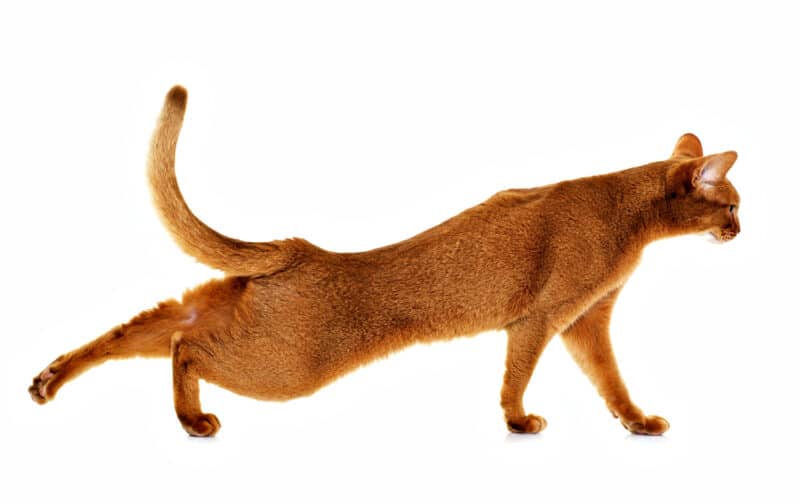
What You Should Feel On A Healthy Cat's Spine
We all know cats come in a variety of shapes and sizes. From svelte to brawny, we want all our furry friends to be healthy. Maybe you've noticed the distinct feel of your cat's spine while petting it, and it has you concerned.
When you glide your hand down your cat's back, you're bound to feel the spinal column. That's perfectly okay and expected. What isn't normal is feeling each individual vertebra like beads on a string.
Between the spine and skin lies a protective layer of muscle and fat. When this layer is ample, the spine won't feel bumpy or protruding.
Visually, a healthy cat's spine remains concealed. If it's discernible to the naked eye, that's a red flag.
But what causes this? What are the factors that might make your cat underweight? Keep reading, and we'll explore these essential aspects.
How Do You Know If Your Cat Is Too Skinny?
First of all, be aware any health concerns should be addressed by your cat's veterinarian. The advice in this article is for educational purposes only and is in no way a substitute for medical advice.
If your cat is underweight, you might be able to feel the knobs of their vertebrae when running a hand across their spine. In severe instances, the knobs and spine itself might be visible, as well as the cat's ribs.
If, when running your hands across your cat, any of their bones (ribs, spine, hips) feel extremely knobby like your knuckles, they could be underweight.
Why Do Cats Lose Weight?
There are a variety of reasons a cat might lose weight, from the obvious to the subtle. Only a veterinarian can diagnose whether or not your cat is indeed underweight, and if so, why. Common reasons for weight loss in cats include:
- Lack of food
- Oral and dental problems
- Stress and emotional trauma
- Diabetes
- Gastrointestinal issues
- Tumors and cancer
- Hyperthyroidism
Let's take a close look at each potential reason.
1. Lack Of Or Difficulty In Finding Food
The most obvious reason for a thing cat is lack of caloric intake. This, in and of itself, could be caused by a variety of reasons.
If the cat is feral and has no access to food from humans, they could have difficulty finding enough prey added to the output of calories during the exertion of hunting. If the cat isn't getting enough to eat, they will be thin and likely underweight.
Feral cats are domesticated animals and need human care. Feeding ferals can help them maintain healthy body weight, but make sure to spay and neuter them as well.
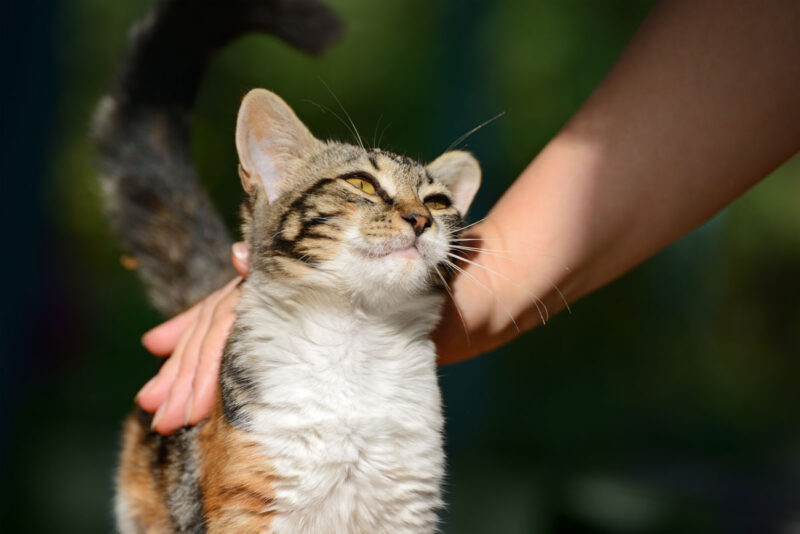
Read more: 9 Practical Ways For You To Help Feral Cats
2. Oral And Dental Issues
Cats sometimes face dental problems that deter them from eating. These issues could include dental pain, mouth sores, or problems with the jaw and throat.
If eating brings pain, your cat will naturally avoid it - no matter how hungry they might be.
3. Stress And Emotional Trauma
Stress could also cause a cat not to eat. A scared cat in a new environment would often prefer to stay hidden rather than show up to eat. That's why stray cats often lose weight.
If you bring a stray home, the cat may prefer to spend a lot of time in hiding, at least until they become comfortable and feel safe around you. Make sure Kitty has plenty of food available in their safe room, and stay away for long enough to allow them to come out and eat.
Read more: How To Get A Cat To Come Out Of Hiding?
4. Diabetes: The Silent Culprit
Diabetes in cats is a complex issue. It can cause what appears to be a paradox: your cat might devour heaps of food yet still lose weight. The reason?
Diabetes interferes with the cat's ability to utilize the calories they consume.
5. Gastrointestinal Disease: A Troublesome Affair
Your cat's weight loss might stem from gastrointestinal problems. Parasites, infections, or inflammations can lead to weight loss.
These conditions might hinder the absorption of nutrients, causing severe weight loss in some cases.
6. Tumors: A Dire Scenario
A cancerous tumor could lead to weight loss in your cat. Cancer cells often siphon off calories that are vital for your cat's nutrition, causing them to lose weight.
7. Hyperthyroidism: The Overactive Adversary
Hyperthyroidism can cause your cat to burn calories at a faster rate than normal. It raises their metabolic rate, which means your cat needs more calories to maintain a healthy weight.
SIGN UP FOR THECATSITE'S EMAIL UPDATES >
Seek Medical Attention
All of the above conditions would require a diagnosis from a vet to ensure proper treatment. When it comes to your pet's health, don't put off a vet visit, as some of these conditions can be fatal.
Can A Cat Be Naturally Thin?
Some cats are naturally thinner than others. A lot of this depends on genetics and the environment. Some cat breeds are extremely svelte, such as the Oriental Shorthair and modern purebred Siamese cats.
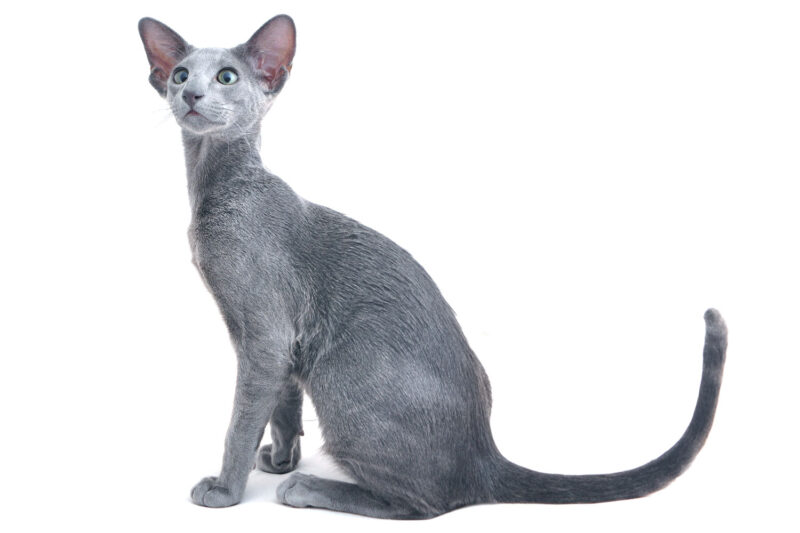
This cat has a bony appearance without actually showing any visible bones. It's only if you feel the knobs of a cat's spine or see their ribs or other bones that you should become concerned.
Extremely active cats will have a svelte appearance; if your kitty spends a lot of time tromping through your hallways, climbing their cat trees, and pouncing their cat toys, they will naturally have a slim appearance. This should not immediately cause alarm.
How Can You Fatten Up A Skinny Cat?
The first step to fatten up a skinny cat would be to take them to the vet. The vet will rule out any underlying health conditions or treat those underlying health conditions if needed.
Ensure your cat has access to food all day. Most cats tend to graze as opposed to just eating a few meals. By making sure the food bowl has food all day, your cat has multiple opportunities to keep a full stomach.
If you have multiple cats, your cat may be frightened by the others. Try placing a food bowl in a place where your frightened cat doesn't feel threatened by the others.
Some cats are finicky and won't eat certain types of foods. Try different kinds of food in search of your picky kitty's favorite. If they turn their nose to dry food, try adding wet food at times or vice versa. Be diligent in your search for the best food for your cat.
Try heating your cat's food in the microwave for a few seconds to enhance the aroma. This will help your cat eat more. Adding a small amount of chicken or beef broth to wet food and warming it will entice your pet even more.
Make sure your cat feels safe. Move the food bowl to a quiet spot and ensure it's not near anything loud, such as cycling appliances or furnaces.
Read our post, "Are Alternative Treatments Safe for Cats?" to determine if there are alternative methods that could aid your cat's appetite.
What Is The Best Appetite Stimulant For Cats?
True appetite stimulants generally need to be prescribed by a veterinarian.
While there are plenty of over-the-counter nutritional supplements, the longest-used appetite stimulant is a drug called cyproheptadine. This drug is classified as an antihistamine but works by antagonizing serotonin.
This has generally been the go-to for appetite stimulation in cats, but another drug called mirtazapine has overtaken it in popularity in recent years.
Mirtazapine is actually an antidepressant used for humans but works well in cats. This drug antagonizes serotonin similarly to cyproheptadine but can be given less frequently and in different doses with similarly great results.
If you're looking for an over-the-counter option, there are many with great reviews. Oral gel supplements are affordable and replace lost nutrients and a high number of calories in a simple gel.
See This Oral Nutritional Gel On Amazon
For more information on getting a cat to eat, read our post, "How to Get Your Cat to Start Eating Again."
Final Thoughts: When Your Cat's Spine Indicates A Health Issue
Feeling your cat's spine shouldn't always ring alarm bells. Run your fingers gently over your cat's body. Check for any unusual protrusions. Can you feel their bones excessively through their skin? Notice if you can see their ribs or spine.
Your cat should ideally have a soft layer of fat cushioning their bones. If it's missing, it's time to pay your vet a visit. Thin doesn't necessarily translate to unhealthy. However, significant shifts in your cat's look or eating habits need your attention.
In the end, no one knows your furry friend better than you do. You're their guardian, their caretaker, their best friend. So, don't dismiss any changes, big or small. Because when it comes to your cat's health, every detail matters. Don't hesitate. Act promptly, and keep your cat purring with health and happiness.
SIGN UP FOR THECATSITE'S EMAIL UPDATES >
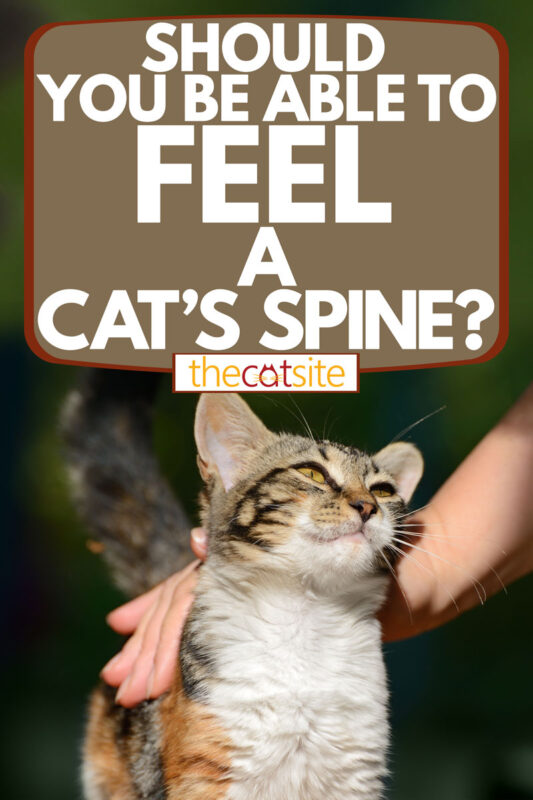
Note: We may get commissions for purchases made through links on this page.



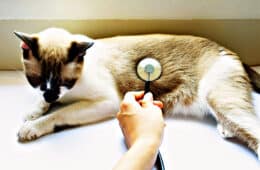
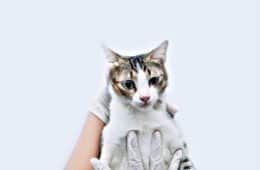
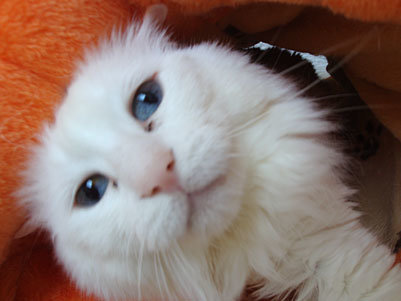
One comment on “Should You Be Able To Feel A Cat’s Spine? – A Guide To Your Cat’s Body Condition”